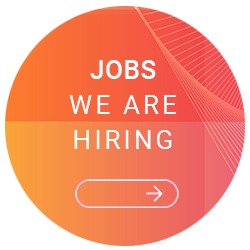Last Updated on 16. June 2025 by mgm-marketing
Company spin-offs (carve-outs) are gaining importance again in Europe. Many corporations are currently considering spinning off business units in order to focus strategically, optimise their cost structure or release liquid funds. According to FTI Consulting, carve-outs accounted for around 18.2% of European transaction volume in the third quarter of 2024 for the first time in years – a historic high.
Consulting firms such as PwC are also observing that more and more large companies worldwide are ‘streamlining’ their portfolios through spin-offs. Activists and financial investors are also increasing the pressure: they are specifically demanding spin-offs of units that are not part of the core business. Examples such as the sale of Siemens Energy’s ‘Trench’ division show that investor pressure to spin off non-core units is growing. The European carve-out market is more active than it has been for years.
Why IT must be involved from the outset
IT is strategically central to a carve-out project because, fundamentally, every business process relies on IT infrastructure and applications. Only if the IT department is involved from the outset can pitfalls be avoided later on. Our experience shows that IT carve-outs require particularly careful planning due to their complexity. IT specialists must familiarise themselves with system landscapes at an early stage, clarify responsibilities and identify dependencies. This prevents important systems from remaining unseparated at the last minute or necessary applications from suddenly becoming unavailable. Early IT involvement also ensures operational continuity and compliance: data protection and security requirements can be addressed from the outset and risks minimised, rather than having to be corrected under time pressure. In short, a seamless carve-out can only succeed if the IT department, specialist departments and deal team work together on the planning.
How companies benefit from early IT involvement
The structured, early involvement of IT in carve-out projects brings numerous measurable benefits for companies:
- Faster project execution: Clearly defined roles, schedules and technical requirements enable the entire carve-out cycle – from initialisation to cutover – to be handled much more efficiently. This reduces the time companies spend relying on costly transitional solutions (TSAs).
- Cost control and budget compliance: Clear IT planning helps to identify hidden costs at an early stage and draw up a realistic budget. This enables companies to avoid expensive rework later in the project.
- Smooth business operations: When IT systems, data and interfaces are migrated in a targeted manner, processes in the target company can continue without interruption. Business operations remain stable, and customer relationships and supply chains continue to function seamlessly.
- Competitive advantage through rapid integration: After a carve-out, the new company must quickly establish itself in the market. Preparing IT infrastructures at an early stage enables faster integration into the buyer’s IT landscape – an important factor for synergy effects and time-to-market.
- Legal and regulatory certainty: Involving IT at an early stage allows all compliance, data protection and licensing requirements to be taken into account without exception – an essential point in highly regulated industries.
- Increased acceptance among stakeholders: A well-organised carve-out conveys competence – both internally and externally. Investors, customers and employees recognise that the transition has been professionally managed, which strengthens confidence in the new company.
These advantages demonstrate that IT is not merely a supporting factor, but an integral part of strategic success in corporate spin-offs. Companies that leverage this opportunity early on gain a clear advantage in planning, implementation and operational excellence.
IT carve-out process
In the IT carve-outs we support, we typically proceed in four phases: due diligence, Day 1 preparation and TSA negotiation, transition and TSA execution, and project closure. Each phase involves specific steps, which are summarised below:
- Due diligence: Setting up the project organisation and kick-off meeting. This involves defining the team, objectives, scope and schedule, as well as determining key roles and responsibilities. IT actively supports the due diligence process at this early stage by providing information on system landscapes, applications and potential risks. IT and business unit managers jointly agree on the target vision and milestones before the operational work begins.
- Day 1 Preparation and TSA negotiation: Development of a detailed separation and transition concept. In this phase, all systems, applications and data to be separated are identified. An analysis of the current IT landscape is carried out and the target state for the independent unit is defined. The separation then begins: IT components are physically and logically separated. This includes logical separation (delineating data and access rights) and physical separation (reassigning servers, networks and data centres). Rebranding runs in parallel, during which user interfaces, labels and references are adapted to the new company.
- Transition and TSA execution: Implementation of the go-live. The separated unit is transferred to its own IT environment. Implementation of the go-live on Day 1, the date of the legal transfer in accordance with the Sale and Purchase Agreement (SPA). In this phase, the separated entity is technically transferred to its own IT environment. IT systems, applications and data are migrated and comprehensively tested. Checks are carried out to ensure that all processes continue to run seamlessly. Functional tests and stability checks ensure that the new infrastructure is ready for use. The aim is a smooth transition without any interruptions to operations.
- Project closure: Final consolidation of all remaining tasks. This includes financial and contractual closures, final system acceptance and handover to regular operations. The project team documents lessons learned and ensures a stable operational organisation. At the end of this phase, all IT connections to the parent company should be removed and the new company should be able to operate independently.
Each of these phases follows a clear structure to keep complexity manageable. This systematic approach minimises risks and ensures operational continuity.
Typical risks of late IT integration
If IT is considered too late in the carve-out process, the risks increase significantly. The most common problems include:
- Day 1 delays: Ensuring business continuity and compliance requirements (GDPR, licensing law, etc.) by a Day 1 deadline usually requires several months of preparation in IT. An M&A schedule that has not been coordinated with IT may be too ambitious for IT implementation and threaten to delay the closing.
- Incomplete separation: If IT systems or data remain connected to the parent company, the carve-out cannot be completed. Business processes then continue to be linked unintentionally. For example, inadequate data migration can lead to information being lost or incorrect system statuses.
- IT service disintegration: Lack of planning can lead to service outages. If, for example, the ERP system or communication network breaks down, processes come to a standstill. Without end-to-end concepts, significant downtime can occur, costing revenue and reputation.
- Security and compliance risks: Transition phases often open up new areas of vulnerability. Inadequately secured data migrations or interfaces can cause data protection violations or security gaps. If access rights are not adjusted correctly, sensitive information continues to flow through the wrong system.
- Cost and time overruns: Repair work ‘on the fly’ drives up project costs. Unexpected difficulties – whether in data conversion or closing security gaps – lead to delays and budget overruns. This often means that lengthy transition services (TSAs) have to be extended, which is time-consuming and expensive.
- Loss of trust among stakeholders: When IT problems occur, the trust of investors, authorities and employees suffers. A delayed IT launch also increases the risk of management friction and potential legal conflicts.
Only an early, structured approach can make these risks manageable. Without an IT team on board, a carve-out project runs the risk of essential aspects being overlooked and the entire project coming to a standstill.
Conclusion: IT determines the success of a carve-out
Carve-outs are currently one of the most dynamic developments in the European M&A market – and they are more complex than many people think. Those who involve the IT department at a late stage risk delays, compliance problems and operational failures. The key to success lies in the structured, early involvement of IT – from planning and separation to go-live.
Experience shows that companies that see IT as a strategic partner in the carve-out process benefit from smooth transitions, stable systems and sustainable, successful spin-offs. Our methodical approach provides the right foundation for this – tried and tested, well thought-out and consistently geared to the requirements of modern corporate spin-offs.
Why mgm consulting partners is the right partner for IT carve-outs and M&A consulting
We combine in-depth IT expertise with sound M&A know-how and years of experience in supporting complex carve-outs and post-merger integrations. Our consultants understand both technological and business challenges and ensure that IT architectures, processes and compliance requirements are optimally set up from the outset. Through our practical, structured approach, we minimise risks, secure business operations and create sustainable solutions – even under high time and performance pressure.







